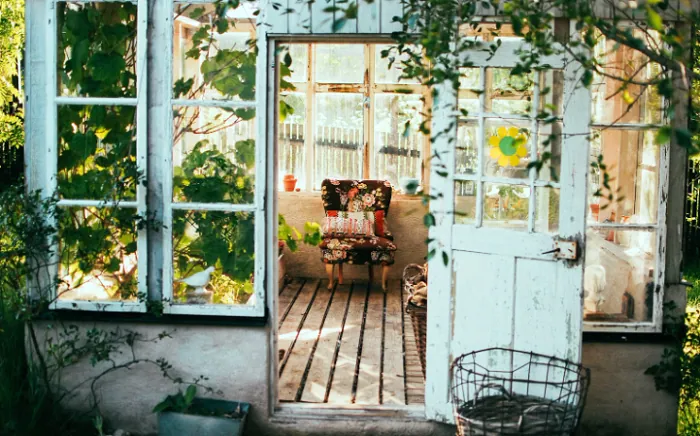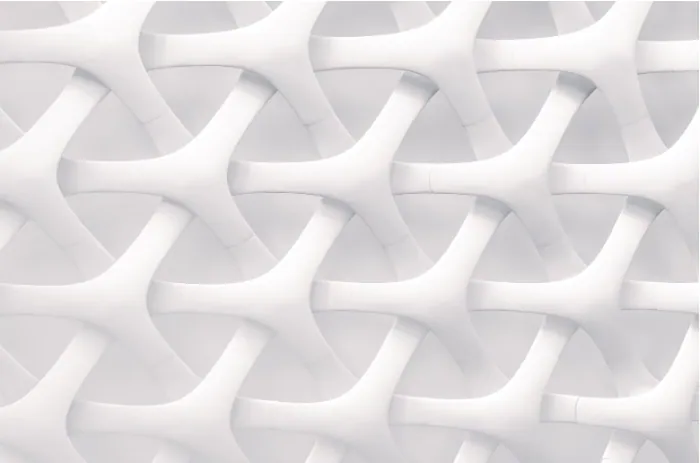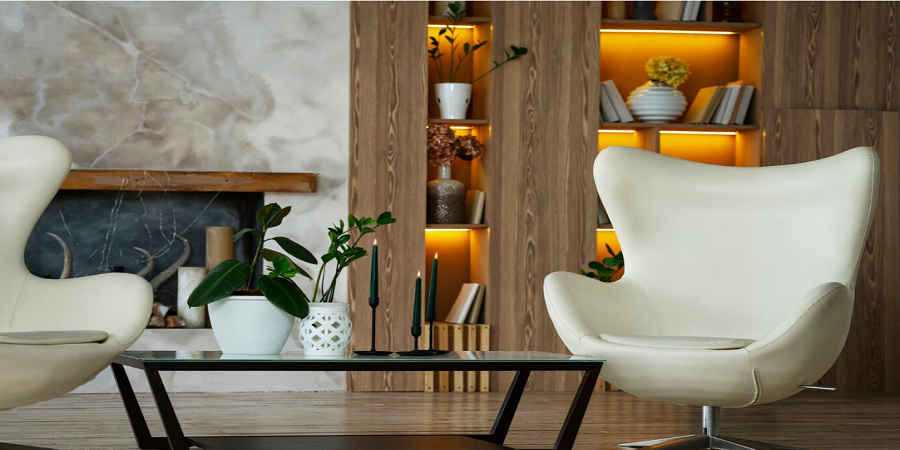Creative Design Room Ideas to Transform Your Space
Introduction:
Are you tired of walking into the same old, uninspiring living space day after day? Do you dream of transforming your home into a place that truly reflects your personality and style? If so, you're in the right place. Welcome to a journey of Design Room Ideas that have the power to completely revolutionize your living space.
In today's fast-paced world, our homes serve as more than just shelters; they are our sanctuaries, our havens of peace and comfort. But all too often, our living spaces can become stale and uninspiring, lacking the creativity and personality that make a house feel like a home. That's where creative design room ideas come into play.
Picture this: walking into your home and being greeted by a space that feels like it was plucked straight from the pages of a magazine. Each room reflects your unique taste and style, with unexpected touches and creative flourishes that make it truly one-of-a-kind. From the colours on the walls to the furniture arrangement to the smallest decorative details, every aspect of your home tells a story and sparks joy.
But how do you go about achieving such a transformation? That's where we come in. In this blog post, we'll explore a myriad of design room ideas that have the power to breathe new life into your living space. Whether you're looking to completely overhaul a room or simply add a few fresh touches, we've got you covered.
From embracing bold colours and patterns to incorporating statement pieces and focal points, we'll delve into the world of design room ideas and show you how to make your home truly your own. So, sit back, relax, and prepare to be inspired as we take you on a journey of creative discovery. Your dream home is just a few design room ideas away.
Embracing Creativity:
Creativity is the cornerstone of interior design, serving as the driving force behind the transformation of ordinary spaces into extraordinary havens of style and comfort. It's the spark that ignites the imagination, the magic ingredient that turns a house into a home. In the world of interior design, creativity isn't just a desirable trait—it's an essential one.
At its core, creativity is about thinking outside the box, pushing boundaries, and daring to be different. It's about seeing possibilities where others see limitations and finding innovative solutions to design challenges. In interior design, creativity knows no bounds, allowing designers to break free from convention and express their unique vision in every room they touch.
But why is creativity so important in interior design? For starters, it's what sets a truly exceptional space apart from the rest. Anyone can follow a set of design rules or replicate the latest trends, but it takes creativity to infuse a room with personality and character. It's what gives a space that indefinable "wow" factor, leaving a lasting impression on all who enter.
Moreover, creativity allows designers to tailor their creations to the specific needs and tastes of their clients. By thinking creatively, designers can develop custom solutions that perfectly suit their clients' lifestyles, preferences, and personalities. Whether it's a cozy reading nook tucked into a corner or a bold accent wall that serves as the room's focal point, creative design choices can transform a space into a reflection of its inhabitants.
Incorporating creative elements into a room can also breathe new life into an otherwise mundane space. Whether it's through unexpected colour combinations, unique furniture arrangements, or imaginative decorative accents, creativity has the power to elevate a room from ordinary to extraordinary. It's what turns a blank canvas into a work of art, infusing each space with a sense of vitality and energy.
Ultimately, embracing creativity in interior design is about more than just making a room look good—it's about creating spaces that inspire, uplift, and delight. By daring to think creatively, designers can unlock the full potential of every space they touch, turning dreams into reality, one room at a time. So go ahead, embrace your creativity, and let your imagination run wild. The possibilities are endless.
Maximizing Functionality:
In the realm of interior design, striking the perfect balance between creativity and functionality is the key to creating spaces that are not only visually stunning but also highly practical and liveable. While creativity allows designers to push the boundaries of design and infuse spaces with personality, functionality ensures that those spaces are both efficient and comfortable to live in. It's the delicate dance between form and function that ultimately leads to spaces that are as beautiful as they are practical.
At its core, functionality is about making the most of every square inch of space, ensuring that every element serves a purpose and contributes to the overall usability of the room. It's about designing with intention, carefully considering how each design choice will impact the way the space is used daily. After all, what good is a beautifully designed room if it doesn't meet the needs of its inhabitants?
But while functionality is undeniably important, it doesn't have to come at the expense of creativity. In fact, some of the most innovative design solutions arise from the need to marry form and function seamlessly. One way to achieve this balance is by embracing a minimalist approach to design, focusing on clean lines, uncluttered spaces, and multi-functional furniture pieces that maximize usability without sacrificing style.
Another strategy for maximizing functionality while maintaining a creative aesthetic is to think vertically. By utilizing wall space for storage, shelving, or even vertical gardens, designers can free up valuable floor space and create a sense of openness and airiness in the room. Additionally, incorporating clever storage solutions such as hidden cabinets, built-in organizers, or multifunctional furniture can help keep clutter at bay and maintain a sense of order in the space.
Ultimately, the key to maximizing functionality while still maintaining a creative aesthetic lies in thoughtful planning and attention to detail. By carefully considering the needs and lifestyle of the space's inhabitants and thinking creatively about how to meet those needs, designers can create spaces that are not only beautiful to look at but also highly functional and practical to live in. After all, in the world of interior design, it's not just about making a statement—it's about making a space that works for the people who inhabit it.
Statement Pieces and Focal Points
In the world of interior design, statement pieces are the unsung heroes that have the power to elevate a room from ordinary to extraordinary. These bold, eye-catching elements serve as the focal points of a space, commanding attention and setting the tone for the entire room. Whether it's a striking piece of artwork, a unique piece of furniture, or an unexpected architectural detail, statement pieces add personality, drama, and visual interest to any space.
One of the most powerful aspects of statement pieces is their ability to instantly inject character and style into a room. A well-chosen statement piece can serve as the centrepiece of a design scheme, anchoring the entire room and providing a focal point around which other elements can be arranged. From a vibrant, oversized painting that demands attention to a sculptural lighting fixture that doubles as a work of art, statement pieces have the power to make a lasting impression and leave a memorable impact on all who enter the space.
When it comes to incorporating statement pieces into your own home, the possibilities are truly endless. Consider starting with a single standout piece that speaks to your personal style and aesthetic preferences, then build the rest of the room around it. For example, a bold, geometric rug can set the stage for a modern, eclectic living room, while a dramatic chandelier can add a touch of glamour and sophistication to a dining room.
In addition to standalone statement pieces, consider creating focal points within a room by grouping together smaller items to create visual interest. For example, a gallery wall of framed artwork or photographs can serve as a striking focal point in a living room or hallway, while a collection of decorative objects displayed on a mantel or shelf can draw the eye and add personality to a space.
Ultimately, the key to incorporating statement pieces and focal points into your home is to let your imagination run wild and trust your instincts. Whether you're drawn to bold colours, unexpected textures, or avant-garde shapes, there's a statement piece out there waiting to transform your space into something truly unforgettable.
Colour and Texture Play:
Colour and texture are powerful tools in the arsenal of any interior designer, capable of transforming a room from mundane to magnificent with just a few strokes of a brush or strategic placement of textiles. These elements not only add visual interest and depth to a space but also can evoke emotion, create atmosphere, and reflect the personality of the inhabitants.

When it comes to colour, the options are virtually limitless. From soothing neutrals to bold, vibrant hues, each colour has its own unique energy and impact on space. Warm tones like reds, oranges, and yellows can add warmth and energy to a room, while cool tones like blues, greens, and purples can create a sense of calm and tranquillity. By carefully selecting the right colour palette for a room, designers can set the mood and create the desired atmosphere.
Similarly, texture plays a crucial role in design, adding depth, dimension, and tactile appeal to a space. From smooth, glossy surfaces to rough, matte finishes, each texture has its own unique character and can be used to create contrast and visual interest. Incorporating a variety of textures—such as plush rugs, cozy throws, sleek metal accents, and natural wood finishes—can add richness and complexity to a room, making it feel more inviting and layered.

When it comes to using colour and texture to enhance the atmosphere of a room, the key is to strike the right balance and create harmony between the two. For example, pairing soft, neutral colours with rich, tactile textures can create a sense of understated luxury and elegance, while combining bold, vibrant colours with sleek, modern finishes can add a sense of drama and excitement to a space.
Ultimately, the possibilities are endless when it comes to using colour and texture to enhance the atmosphere of a room. By experimenting with different combinations and trusting your instincts, you can create a space that not only looks beautiful but also feels comfortable, inviting, and uniquely yours.
Personalization and Customization:
In the world of interior design, there's nothing quite as powerful as personalization. It's what transforms a house into a home, imbuing it with warmth, character, and a sense of belonging. Personalization is the secret sauce that takes a room from cookie-cutter to one-of-a-kind, making it a true reflection of the people who inhabit it.
At its core, personalization is about more than just decorating with your favourite colours or filling your space with trendy décor—it's about infusing your home with elements that tell your story and speak to your unique personality and interests. Whether it's displaying cherished family photos, showcasing travel souvenirs collected from around the world, or incorporating heirloom pieces passed down through generations, personalization adds depth and authenticity to a space, making it feel lived-in and loved.
One of the simplest ways to incorporate personal touches into your home is through the use of artwork and accessories. Whether you're a fan of bold, contemporary paintings or prefer a more eclectic mix of vintage finds and handmade treasures, displaying items that speak to your personal tastes and interests is a sure-fire way to make a space feel uniquely yours. Consider creating a gallery wall of family photos or arranging a collection of favourite objects on a shelf or mantel to add personality and charm to your space.
Another way to personalize your home is through custom elements and bespoke furnishings. Whether it's a custom-built piece of furniture designed to fit perfectly in a tricky corner or a one-of-a-kind lighting fixture crafted by a local artisan, investing in custom pieces adds a level of craftsmanship and individuality to your space that simply can't be replicated. From custom upholstery and window treatments to bespoke cabinetry and built-in storage solutions, the possibilities are endless when it comes to creating a home that truly reflects your unique style and personality.
Ultimately, personalization and customization are what transform a house into a home. By infusing your space with elements that speak to your personality, interests, and experiences, you can create a space that not only looks beautiful but also feels like a true reflection of who you are. So go ahead, embrace your individuality, and make your home uniquely yours.
Budget-Friendly Creativity:
Creativity knows no bounds, and neither should budget constraints. While many people mistakenly believe that achieving a stylish and inviting home requires deep pockets, the truth is that with a little ingenuity and resourcefulness, it's possible to create a space that's both beautiful and budget-friendly. In fact, some of the most creative and inspiring design solutions arise from the need to work within limited financial means.
One common misconception about creativity is that it's synonymous with extravagance—that to be truly creative, one must spare no expense in pursuit of their vision. However, creativity is not about how much money you spend; it's about how resourcefully you use what you have. By thinking outside the box and approaching design challenges with an open mind, it's possible to achieve stunning results on even the tightest of budgets.
One of the best ways to inject creativity into your home without breaking the bank is through the use of DIY projects and upcycling. From repurposing old furniture and accessories to creating custom artwork and décor items, DIY projects offer a cost-effective way to add personality and charm to your space while also putting your own unique stamp on it. Consider tackling projects such as painting old furniture in bold, unexpected colors, creating your own artwork using inexpensive materials like canvas and acrylic paint, or upcycling thrift store finds into one-of-a-kind statement pieces.
In addition to DIY projects, another budget-friendly way to unleash your creativity is by embracing second-hand shopping and thrifting. Thrift stores, flea markets, and online marketplaces are treasure troves of unique finds just waiting to be discovered. With a little patience and a keen eye, you can uncover hidden gems at a fraction of the cost of buying new, allowing you to stretch your budget further while still achieving a stylish and personalized look for your home.
Ultimately, budget-friendly creativity is all about thinking creatively, embracing resourcefulness, and finding innovative ways to make the most of what you have. By challenging common misconceptions about creativity and budget constraints, and by exploring DIY projects, upcycling, and thrifting, you can create a home that's as stylish and inviting as it is affordable. So go ahead, unleash your creativity, and transform your space without breaking the bank.
Conclusion:
In conclusion, creative design room ideas hold the power to completely transform living spaces, turning them into personalized sanctuaries that reflect the unique tastes and personalities of their inhabitants. By embracing creativity, we can breathe new life into our homes, infusing them with personality, character, and charm. I encourage you, dear readers, to unleash your creativity and take bold design risks in pursuit of a home you truly love. Whether it's through DIY projects, second-hand finds, or custom creations, let your imagination run wild and create a space that brings you joy every time you walk through the door.

Comments